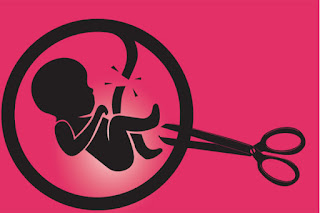Prevention of unsafe abortions
Between 2015 and 2019, an annual average of 73.3 million induced abortions (safe and unsafe) were recorded worldwide (1).
There were 39 induced abortions for every 1,000 women aged 15-49 (1).
3 out of 10 pregnancies (29%) and 6 out of 10 unwanted pregnancies (61%) ended in induced abortion (1).
It is estimated that from 2010 to 2014, about 45% of all abortions were unsafe. Almost all of these unsafe abortions occurred in developing countries (2).
Of these, 1 in 3 were performed under unsafe or high-risk conditions (2).
It is estimated that more than half of all unsafe abortions worldwide occurred in Asia, mostly in South and Central Asia (2).
3 out of 4 abortions performed in Africa and Latin America were unsafe (2).
The risk of dying from unsafe abortion was highest in Africa (2).
Between 4.7% and 13.2% of maternal deaths each year can be attributed to unsafe abortion (3).
Approximately 7 million women are hospitalized each year for unsafe abortions in developing countries (4).
The annual cost of treating the major complications of unsafe abortion is estimated at $553 million (USD) (5).
A safe abortion should be performed or accompanied by a skilled person, using methods recommended by WHO according to the duration of pregnancy.
Virtually all abortion-related deaths and disabilities could be prevented through sex education, use of effective contraception, legal access to safe induced abortion, and timely care in the event of complications.
Abortions are safe when performed using a method recommended by the WHO and adapted to the duration of the pregnancy and when the person performing the abortion has the necessary skills. This may involve the administration of medication (medical abortion) or a simple procedure performed on an outpatient basis.
An abortion is unsafe when it is performed by a person who is not competent, or in an environment where minimum medical standards are not met, or both. The people, skills and medical standards considered to ensure a safe abortion differ depending on whether it is a medical abortion (performed exclusively by administering medication) or a surgical abortion (performed by manual or electrical suction). The skills and medical standards required to perform a safe abortion also vary according to the length of pregnancy and scientific advances.
Abortions are less safe when they are performed using outdated methods such as instrumental curettage, even if the practitioner is competent, or when women taking medication are not properly informed or do not have access to a competent person when needed.
Abortions are unsafe or unsafe when they involve the ingestion of caustic substances or when untrained persons perform unsafe methods such as the insertion of foreign bodies or the absorption of traditional concoctions.
Women, including adolescents, who have unwanted pregnancies frequently resort to unsafe abortion when they cannot access safe abortion. Barriers to safe abortion include the following:
restrictive legislation ;
limited availability of services;
high cost;
stigma;
conscientious objection by health care providers; and
Unnecessary requirements such as mandatory waiting times, mandatory counselling, misleading information, third party authorization, and unnecessary medical tests that delay care.
Magnitude of the problem
It is estimated that from 2010 to 2014, about 45% of all abortions were unsafe (2).
One third of all unsafe abortions were performed under the worst safety conditions, that is, by incompetent individuals using unsafe and invasive methods (2).
In Latin America and Africa, the majority of abortions (approximately 3 out of 4) were unsafe.
According to 2012 estimates, 7 million women per year in developing countries alone were hospitalized for complications of unsafe abortion (4).
Each year, 4.7% to 13.2% of maternal deaths can be attributed to unsafe abortion (3). In developed regions, it is estimated that for every 100,000 unsafe abortions, 30 women die. This figure rises to 220 deaths per 100,000 unsafe abortions in developing countries and 520 deaths in sub-Saharan Africa.
In Africa, nearly half of all abortions take place in the worst safety conditions. In addition, mortality from unsafe abortions disproportionately burdens women in Africa. While the continent accounts for 29% of all unsafe abortions, it is home to 62% of the deaths caused by unsafe abortion (2).
Who is at risk?
Any woman whose pregnancy is unwanted and who cannot benefit from safe abortion is at risk. Women living in low-income countries and poor women are at greater risk of unsafe abortion. The later in pregnancy this type of abortion is performed, the higher the proportion of deaths and injuries. The rate of unsafe abortion is higher when women have limited or no access to effective contraception and safe abortion.







0 Commentaires